common types of ed
1. Anorexia Nervosa (AN)
Characterised by:
-
Abnormally low weight
-
Distorted body image
-
Intense fear of gaining weight
Anorexia sufferers have adverse reactions to gaining weight and shape, often going to extreme methods which significantly affect their daily activities, such as extreme exercise, significant reduction of caloric intake, misusing laxatives or diet pills etc.
There are two common types of anorexia:
-
Anorexia Nervosa Binge/Purge Type – The individual suffering from anorexia nervosa binge/purge type, will purge when he or she eats. This is typically a result of the overwhelming feelings of guilt a sufferer would experience in relation to eating; they compensate by vomiting, abusing laxatives, or excessively exercising.
-
Restrictive Anorexia Nervosa – In this form of anorexia nervosa, the individual will fiercely limit the quantity of food consumed, characteristically ingesting a minimal amount that is well below their body’s caloric needs, effectively slowly starving him or herself.
Though two classifications of anorexia nervosa exist, both types exhibit similar symptoms, such as irrational fear of weight gain and abnormal eating patterns. Thinness is used to define one’s self-worth and restrictive behaviours are used as a form of control in one’s life.
AN is extremely dangerous and life-threatening due to lack of nutrition and low weight of the sufferer. Many possible physical problems can result from anorexia, such as osteoporosis, hair loss and amenorrhea (abnormal absence of menstruation).
2. Bulimia Nervosa (BN)
A dangerous, life-threatening disorder defined by the consumption of food followed by expelling of content through purging (that is, self-induced vomiting), exercising, laxative use, or other compensatory methods.
Unlike AN sufferers, BN sufferers do not necessarily have to be underweight. Often, BN sufferers struggle with self-image and generally have a tendency to view food as a source of comfort or coping mechanism. They often have a love-hate relationship with food, loss of control, poor body image and low self-confidence.
BN is extremely harmful to the body due to the unnatural reaction of forced vomiting and lack of proper nutrition absorption by the body. Many possible physical problems can result from bulimia, such as electrolyte imbalance (which can result in cardiac arrhythmia, cardiac arrest, or ultimately death), tooth decay and inflammation of the esophagus.
3. Binge-Eating Disorder (BED)
Slightly similar to BN, this is characterised by the recurrent event of consumption of large amounts of food, often very quickly to the point of discomfort and fullness. However, it does not involve compensatory behaviours.
BED sufferers experience a loss of control during the binge, followed by shame, distress and guilt after the binge. Complications of BED include cardiovascular disease, Type 2 diabetes and obesity.
4.Other Specified Feeding and Eating Disorders (OSFED)
Previously known as EDNOS (Eating Disorder not otherwise specified), this ED can be seen as a mix of symptoms of the above disorders. Sufferers often show signs and symptoms of more than 1 specific eating disorder or disordered eating habit but do not meet the full criteria for the diagnosis of the above disorders.
This does not mean that the person has a less serious eating disorder. OSFED is a serious mental illness that occurs in adults, adolescents and children. It is the most common eating disorder diagnosed for adults as well as adolescents and affects both males and females.
